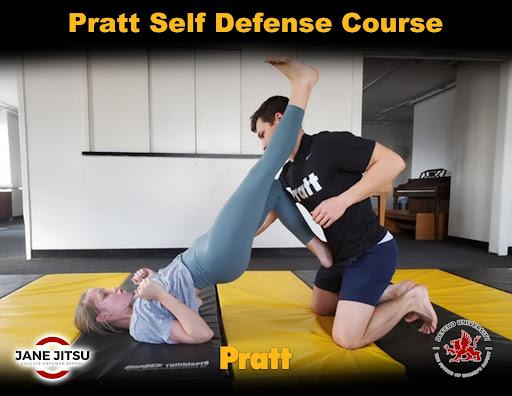Table of Contents
- Choosing the Right Self-Defense System for Your Needs
- Key Techniques and Skills Taught in Beginner Self-Defense Classes
- Top Locations and Platforms Offering Beginner Self-Defense Training
- Expert Tips for Maximizing Your Progress in Self-Defense Programs
- Closing Remarks
Choosing the Right Self-Defense System for Your Needs
When starting your journey into self-defense, it’s crucial to match a system to your lifestyle, physical abilities, and personal goals. Different martial arts and programs focus on varied aspects-from striking and grappling to situational awareness and escape tactics. For instance, if you prefer a practical, straightforward approach that prioritizes real-world scenarios, Krav Maga or Systema might be a strong fit. Conversely, if you enjoy a traditional martial art with rich philosophy and technique, Karate or Taekwondo could be more fulfilling. Be mindful of factors like class availability, instructor experience, and whether the style emphasizes fitness, competition, or survival strategies.
To help narrow your decision, consider the following elements before committing to a program:
- Training Environment: Is the atmosphere supportive and motivating?
- Practicality: Does the curriculum address real-life threats effectively?
- Physical Demands: Are the techniques compatible with your strength and mobility?
- Instructor Credentials: Look for certified trainers with a solid background.
- Community and Support: A good self-defense class fosters camaraderie and confidence.
Key Techniques and Skills Taught in Beginner Self-Defense Classes
In beginner self-defense classes, students typically start with mastering the fundamentals that build confidence and situational awareness. This includes learning how to recognize potential threats early and understanding the importance of maintaining a strong mindset. Instructors focus on essential stance, footwork, and balance to establish a solid foundation for more advanced moves. Techniques such as basic blocks, palm strikes, and knee strikes are introduced to equip students with effective tools for keeping an attacker at a distance.
Core skills emphasized in these classes often include:
- Escaping common grabs and holds, such as wrist grabs or bear hugs
- Simple but powerful strikes aimed at vulnerable targets like eyes, nose, and throat
- Utilizing leverage to break free from restraints
- Proper breathing and stress management to remain calm under pressure
- Basic ground defense techniques to protect oneself if taken down
Above all, these beginner lessons stress prevention and the legal aspects of self-defense, ensuring that students understand how to use their skills responsibly and effectively. By focusing on practical, real-world applications, these classes empower individuals to protect themselves confidently and with minimal risk.
Top Locations and Platforms Offering Beginner Self-Defense Training
When starting your self-defense journey, choosing the right location can significantly impact your progress and confidence. Cities like New York, Los Angeles, and Chicago boast world-renowned dojos and community centers dedicated to empowering beginners. These urban hubs often feature a variety of styles under one roof, allowing newcomers to explore multiple disciplines before finding their perfect fit. Local YMCAs and martial arts academies also play a crucial role by offering affordable, beginner-friendly courses with expert instructors focused on practical, real-world applications.
For those seeking flexibility and convenience, online platforms have emerged as top choices in 2024. Websites like MasterClass, Udemy, and dedicated self-defense apps provide video tutorials tailored specifically for beginners, covering essential techniques from Krav Maga to Brazilian Jiu-Jitsu. These digital solutions also include community forums, progress tracking, and live Q&A sessions, providing a supportive environment without leaving home. Whether you prefer in-person immersion or guided digital learning, these locations and platforms together offer a robust foundation for building your self-defense skills with confidence.
Expert Tips for Maximizing Your Progress in Self-Defense Programs
Consistency is the cornerstone of genuine progress when learning self-defense. Setting a regular training schedule not only solidifies muscle memory but also enhances mental readiness in stressful situations. Pair your physical drills with mindfulness exercises such as visualization techniques-imagine realistic scenarios where you might need to defend yourself, mentally rehearsing your responses. This dual approach sharpens decision-making under pressure and reinforces confidence, both critical for effective self-defense.
Incorporate these strategies to elevate your practice:
- Focus on mastering basic techniques thoroughly before advancing to complex moves.
- Train with diverse partners to adapt to different body types and fighting styles.
- Use video recordings to review and refine your form and technique.
- Engage in cross-training exercises like strength conditioning and agility drills.
- Ask for feedback from instructors and peers to identify areas for improvement.
Closing Remarks
Choosing the right self-defense class or system as a beginner can feel overwhelming, but with the options outlined here, you’re well-equipped to make an informed decision that suits your needs and lifestyle. Remember, the best self-defense training is the one you stay consistent with-building confidence, awareness, and practical skills over time. Whether you opt for a traditional martial art, a modern combative system, or a specialized women’s self-defense course, the key is to take that first step toward empowerment and personal safety. Here’s to a safer, stronger you in 2024 and beyond!Check Our Other Blogs
- StunGun – Your Trusted Source for Stun Guns, Laws, and Self-Defense Tips
- PepperSprayLaws – Your Trusted Resource for Pepper Spray Information
- StunGunLaws – Your Trusted Guide to Stun Gun Legality and Safety



